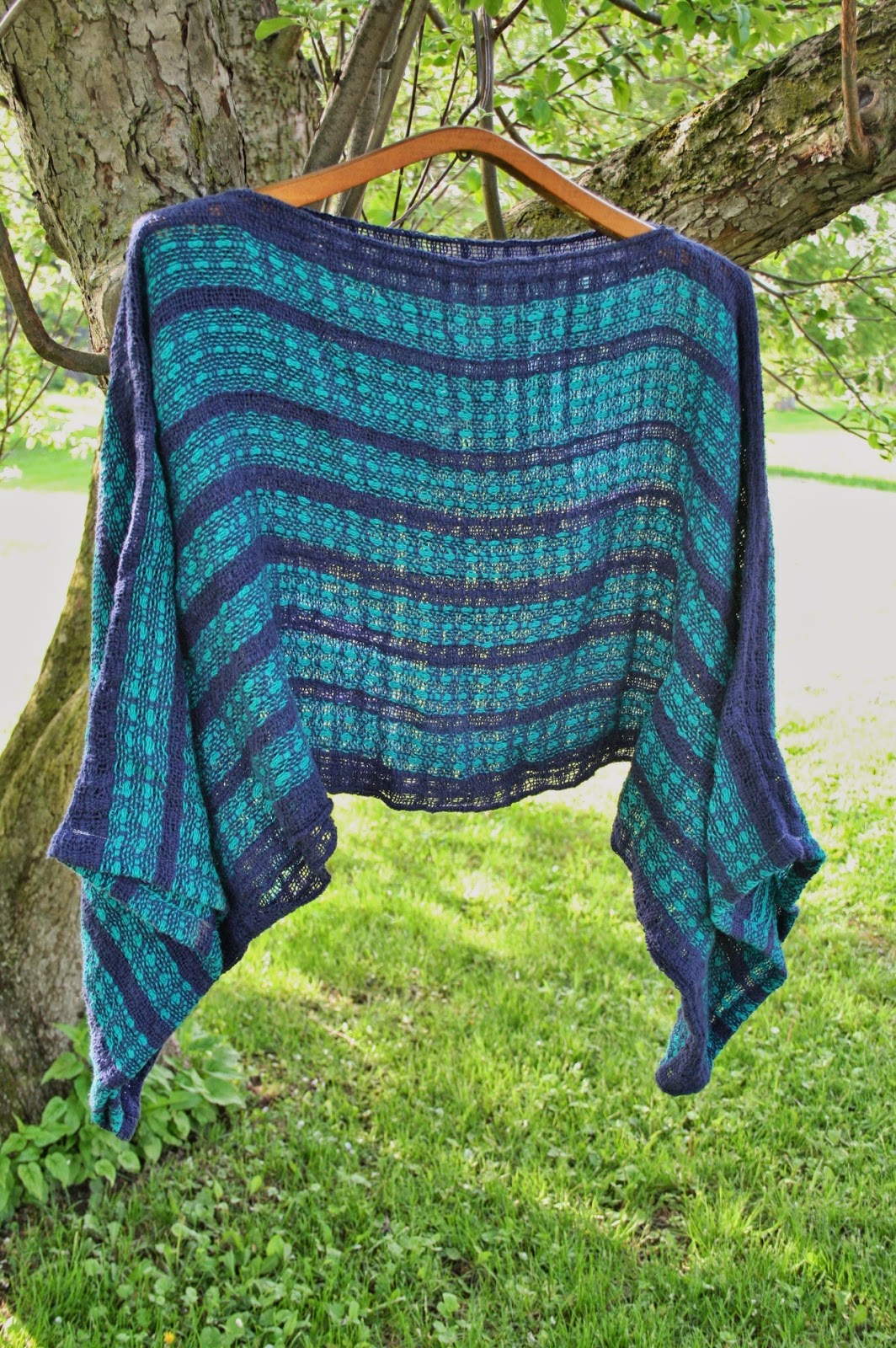Handwoven Clothes - Patterns or no Patterns
 Last week, I showed you a dress from material I wove. This week, I'm going to focus on patterns versus no patterns.
Last week, I showed you a dress from material I wove. This week, I'm going to focus on patterns versus no patterns.No Pattern
To the right is a photograph of my sister modeling a dress I made from handwoven fabric. In this case, the dress was used with no pattern (i.e. I designed as I went). It is created using five panels, three of which are eight inches shorter than the other two. The longer panels form the front of the dress, and include the casing for the halter strap; the shorter pieces form the back and sides.
Benefits
For using handwoven fabric, it's fairly easy to say one major benefit is being able to simply design. Knowing how much fabric I had, I could divide the fabric into the panels, adding and subtracting as I went. This works out well when I have fabric, but not exactly certain what I want to do with it.
Problems
For this particular style of design, having a dressmaker's dummy is almost a necessity. It helped me by giving me a model that didn't care if I accidentally poked it with a pin, and could be adjusted to various sizes. While the dress could have been created without having a dressmaker's dummy, even remotely attempting this on myself would have proved a disaster.
 Pattern
PatternThe shirt to the left is modeled by yours truly, and showcases my first attempt at using my handwoven fabric on clothing. This is shirt is uses Simplicity's Regency pattern, with a few adjustments (primarily in the length, obviously).
I didn't weave up enough material, but wound up using extra fabric I had for the sleeves. The same fabric was used to make the lining. For those wondering, I had already used the pattern once before so I knew what to expect with it, otherwise, I would highly recommend follow the pattern with store-bought material first.
Benefits
The best aspect of using a store pattern is the options which exist for clothes. While most of us cannot visualize what we want in a gown, we can find it in the store, and purchase the pattern.
A second major benefit of using the pattern is knowing the sizing will fit better. This is especially true if you don't have a dressmaker's dummy. While it's beneficial, it isn't always necessary when using patterns.
Problems
There are a few drawbacks, however, for using store-bought patterns. The biggest one is material - the yardage requirements are based upon standard widths, most of handweavers simply don't have, especially is they use rigid heddle looms. For those using floor looms, the width of fabric is less of a problem. For example, I had to sew three panels together then cut them for the bottom part of the shirt.
All fabric needs to have the cut edges protected, but for handwoven fabric it is paramount because the ease with which it can unravel. Patterns with a lot of pieces will require extra care and fabric. Added to this, if you make a mistake, you won't be able to run out to the store and purchase more material.
All in all, both ways are useful. Since I don't know how to draft a dress pattern, having someone else's patterns help me achieve the look I want without having to figure out how to make it. On the other hand, when I have fabric and general idea, I can easily design with only a few tools and no pattern.


Comments
Post a Comment